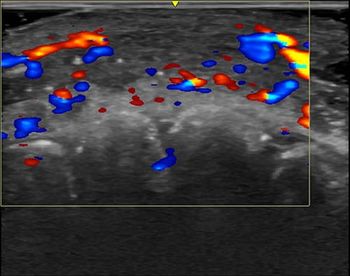
MRI Findings Following Arthroscopic Hip Surgery
Assessment of MRI findings following arthroscopic hip surgery among symptomatic and asymptomatic patients.
The most common finding by MRI following arthroscopic hip surgery is obliteration of the paralabral sulcus, among both symptomatic and asymptomatic patients, according to a study published in
Researchers from Switzerland sought to determine and compare the frequency of imaging abnormalities in asymptomatic and symptomatic patients after arthroscopic hip surgery. Thirty-four patients (17 asymptomatic and 17 symptomatic patients) participated in the study. All underwent 1.5-T MR arthrography of the hip one year following arthroscopic treatment of femoroacetabular impingement. The images were analyzed by two readers who looked for the presence of abnormal imaging findings, including capsular adhesions at the femoral neck, obliteration of the paralabral sulcus, labral defects, and defects of the hip capsule in several anatomic positions (anterior to posterior). Postoperative findings were compared with linear and generalized linear mixed-effects regression models.
Results showed capsular adhesions at the anterior femoral neck were present in 12 of the 34 patients (35%), and there were no differences between the groups or readers.
The researchers concluded that obliteration of the paralabral sulcus was the most frequent finding after arthroscopic hip surgery in both asymptomatic and symptomatic patients, and capsular adhesions at the anterior femoral neck were present in 35 % of patients in both groups.
Newsletter
Stay at the forefront of radiology with the Diagnostic Imaging newsletter, delivering the latest news, clinical insights, and imaging advancements for today’s radiologists.




























